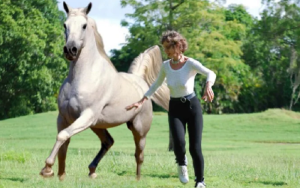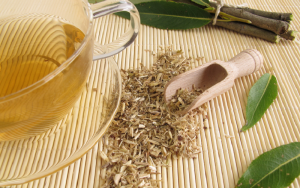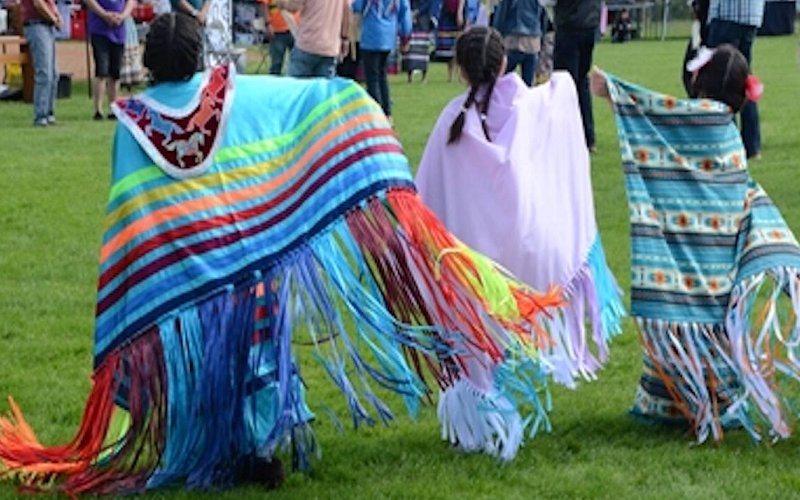
Fitness, a cornerstone of our overall well-being, has been viewed, understood, and practiced in remarkably diverse ways across different cultures. Many of these practices remain alive in indigenous cultures, integrating the mind, body, and spirit in a symbiotic relationship with the natural environment. Here we explore the heart of indigenous tribes from North America, Africa, Australia, South America, Asia, and the Pacific Islands, unveiling the methods and techniques these cultures have long embraced for physical fitness and holistic health.
Contents
Understanding Fitness in Indigenous Cultures
The concept of fitness in indigenous cultures extends far beyond the modern notion of gym workouts and regimented exercise programs. Fitness is holistically woven into the very fabric of their lifestyle, ensuring a balanced interaction between the mind, body, and spirit. The practices adopted by these cultures are rooted in the natural environment, the changing seasons, and the demands of their daily life.
The Concept of Fitness in Indigenous Cultures
For indigenous cultures, fitness is not a separate aspect to be consciously attended to; it is rather a natural outcome of their way of life. The rugged terrains they navigate, the long distances they cover on foot, the manual labor they engage in for food and shelter, all contribute to their physical fitness. Their spiritual beliefs often involve ceremonies and rituals that include physically demanding dances and other activities, which further enhance their strength, endurance, and flexibility.
Their concept of fitness also strongly aligns with their communal way of living. Many fitness activities are social events that bring together the community, fostering stronger social bonds while enhancing physical health. This holistic approach to fitness, integrating physical health, mental well-being, and social connections, offers a rich perspective that can be integrated into our modern understanding of fitness.
Natural Environment and Its Role in Indigenous Fitness
Indigenous peoples have a deep connection with the land they inhabit. This connection extends to their fitness practices as well. The natural environment is their playground, their gym, and their training ground.
The challenging landscapes – be it the steep inclines of mountainous regions, the dense vegetation of forests, or the vast expanses of deserts – are navigated with grace and agility, contributing to their physical fitness. The daily activities required for survival, such as hunting, fishing, gathering, and farming, involve a wide range of movements and engage different muscle groups, promoting overall fitness.
The natural elements also play a significant role in the indigenous understanding of fitness. The changing seasons, for instance, bring variations in the physical activities undertaken, thereby ensuring a well-rounded fitness routine.
Integrating Mind, Body, and Spirit in Indigenous Fitness
Another remarkable aspect of indigenous fitness techniques is the integration of mind, body, and spirit. Physical fitness is not an isolated goal; instead, it is intrinsically linked to mental and spiritual well-being.
Many traditional practices, such as dances, martial arts, and games, require a high level of concentration and mindfulness, thereby improving mental fitness. Likewise, the deep spiritual significance attached to many of these practices nurtures spiritual health.
Moreover, the communal nature of many fitness activities promotes emotional well-being by fostering a sense of belonging and mutual support. This integrated approach, harmonizing the physical with the mental and spiritual, presents a holistic model of fitness that goes beyond mere physical health [1].
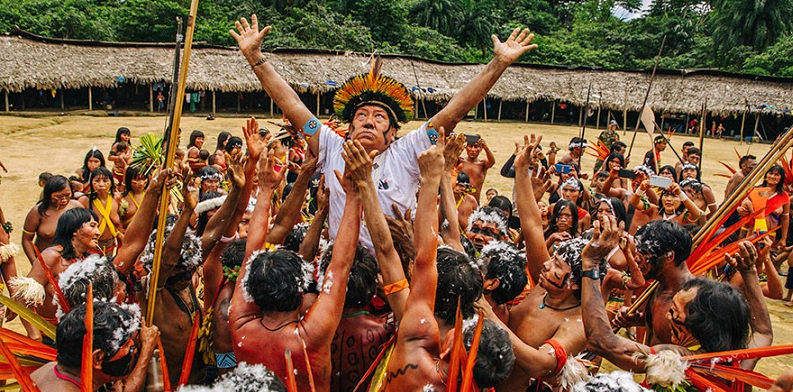
Fitness Techniques from North America
The indigenous tribes of North America have a long and rich history of fitness practices that are deeply intertwined with their culture and way of life.
Overview of Indigenous Tribes in North America
The indigenous peoples of North America, broadly categorized into Native Americans, Inuit, and First Nations, have inhabited diverse landscapes, from the icy expanses of Alaska to the arid deserts of Arizona. Each tribe developed unique survival techniques, rituals, and games which greatly contributed to their physical fitness and overall well-being.
The Role of Hunting in Fitness: Tribes of the Great Plains
The tribes of the Great Plains, such as the Sioux and the Cheyenne, relied heavily on hunting buffalo for their survival. The act of hunting these massive creatures was a challenging task requiring a high level of physical fitness. The hunters needed to be swift to outrun or dodge the buffalo, strong enough to launch their weapons, and resilient to withstand long periods of tracking and hunting.
This rigorous activity incorporated a blend of cardio and strength training that resulted in well-rounded physical fitness. They also needed keen observational skills and a deep understanding of animal behavior, enhancing their mental fitness as well.
Traditional Games as Fitness Activities: Native American Tribes
In addition to hunting, traditional games also played a significant role in the fitness regimes of Native American tribes. Lacrosse, known as stickball in some tribes, is one of the most well-known indigenous games in North America. Originating from the Eastern Woodlands and the Plains regions, this game was often referred to as “The Creator’s Game” and was believed to have healing properties.
Lacrosse is a physically demanding sport that requires agility, speed, and strength, as well as mental skills like strategy and teamwork. It is an excellent example of how Native American tribes naturally incorporated fitness into their recreational activities [2].
Other indigenous games, like hoop and spear, were also common, which involved throwing a spear through a rolling hoop. This game was excellent for developing hand-eye coordination, agility, and accuracy.
Through hunting and traditional games, the indigenous tribes of North America nurtured their physical fitness while also enhancing their mental agility, community bonds, and spiritual health. The practicality and holistic nature of these activities can inspire us to rethink our approach to fitness in modern times.
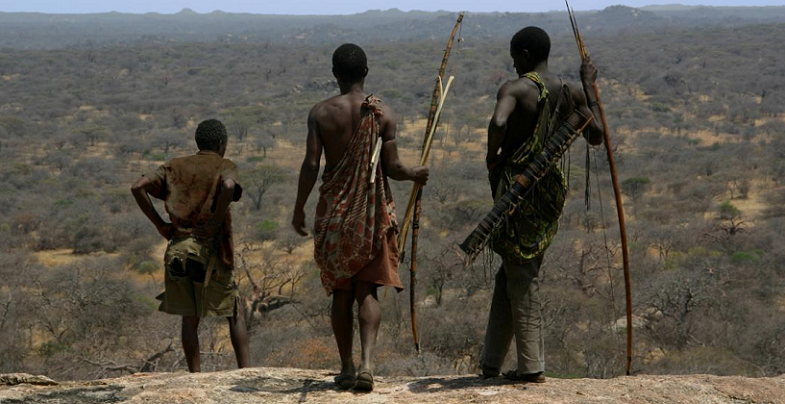
Fitness Techniques from Africa
The vast continent of Africa is home to diverse indigenous tribes, each with unique traditions and ways of life. From the energetic dance forms of West African tribes to the endurance-demanding hunting and gathering techniques of the Bushmen, fitness practices are deeply integrated into their daily life and culture.
Overview of Indigenous Tribes in Africa
Africa, the cradle of humankind, is known for its rich cultural diversity. Indigenous tribes here span a wide geographical expanse, including the Maasai of East Africa, the San (Bushmen) of Southern Africa, and the Yoruba and Igbo tribes of West Africa, among many others. Despite the geographical and cultural diversity, what binds these cultures together is their profound relationship with nature and their reliance on physical activities for survival and cultural expression.
African Dance Forms and Their Fitness Benefits: Tribes of West Africa
One of the most distinctive aspects of African indigenous cultures is their traditional dance forms. These dances are not only an important medium of cultural expression but also serve as excellent physical workouts.
West African dance, in particular, is well known for its intensity and vigor. Tribes such as the Yoruba and the Igbo have traditional dances that involve complex movements, rapid footwork, and dynamic rhythms, offering an intense cardiovascular workout. Dancing not only develops muscular strength, flexibility, and endurance but also enhances coordination and rhythm.
Moreover, these dance forms are often performed in groups and involve a high level of interaction, contributing to social cohesion and emotional well-being [3].
Hunting and Gathering Techniques as Fitness: Bushmen of Southern Africa
The Bushmen of Southern Africa, also known as the San people, have a long-standing tradition of hunting and gathering, which demands a high level of physical fitness. The San people are known for their persistence hunting technique, where they chase an animal for hours under the scorching sun until it collapses from exhaustion.
This method of hunting is an extreme test of endurance and mental resilience. Additionally, the San people also engage in foraging activities that require keen observational skills, flexibility, and fine motor skills.
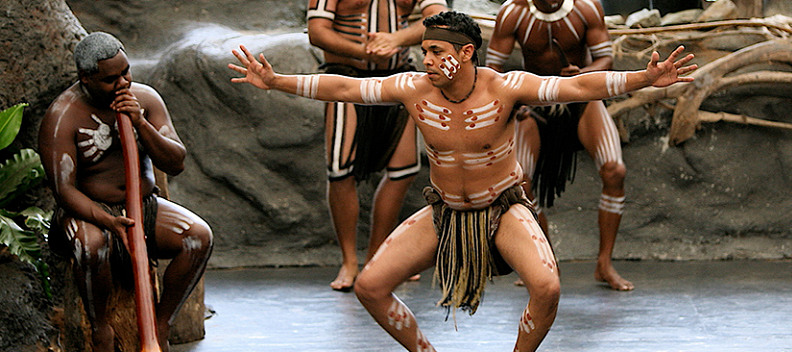
Fitness Techniques from Australia
The indigenous cultures of Australia, predominantly represented by Aboriginal and Torres Strait Islander peoples, have thrived in harmony with the diverse and often harsh environments of the continent for thousands of years. Their unique fitness techniques, ranging from traditional hunting and fishing methods to indigenous sports, speak of a deep connection with the land and sea.
Overview of Indigenous Tribes in Australia
Aboriginal Australians and Torres Strait Islanders have a rich and varied cultural heritage that spans over 60,000 years. With more than 250 distinct language groups spread across the continent, each community has unique traditions, practices, and methods for maintaining physical health and well-being.
Traditional Aboriginal Hunting and Fishing Techniques
Aboriginal Australians developed ingenious hunting and fishing techniques, tailored to the unique environments they inhabited, which contributed significantly to their physical fitness.
In the vast deserts and dry plains, Aboriginal people perfected tracking and hunting methods to catch kangaroos, emus, and other wildlife. This involved a great deal of stealth, speed, and strength, fostering agility and cardiovascular fitness.
In coastal and riverine regions, Aboriginal people developed sophisticated fishing techniques. Catching fish required precision, upper body strength, and often involved swimming or diving, providing an all-around physical workout [4].
Australian Indigenous Sports and Their Fitness Benefits
Indigenous Australians also created various sports and games that contributed to their physical fitness. For example, Marngrook, a traditional game played with a possum skin ball, is thought to be a precursor to Australian rules football. This sport required agility, endurance, and teamwork, making it a comprehensive physical workout.
In Torres Strait Islander communities, competitive canoeing was common, which is an excellent workout for the upper body and core, as well as a test of endurance and teamwork.
The fitness techniques of Indigenous Australians exemplify how harmoniously they lived with their environment, developing physical skills that were crucial for survival and cultural continuity. These practices, which highlight the interconnection of physical health, environment, and community, offer valuable insights for our modern approach to fitness.
Fitness Techniques from South America
South America, with its diverse landscapes ranging from dense rainforests to rugged mountains, is home to numerous indigenous tribes, each with unique fitness techniques.
Overview of Indigenous Tribes in South America
South America is home to a diverse array of indigenous cultures. The Amazon rainforest alone houses over 400 distinct tribes, each with its own language, customs, and practices. In the mountainous Andean region, the Quechua and Aymara people have adapted to life at high altitudes. Despite the diversity, a common thread among these cultures is a lifestyle that naturally promotes physical fitness.
The Fitness Value of Amazonian Tribal Hunting Techniques
Amazonian tribes like the Yanomami and the Kayapo have long relied on hunting and fishing for sustenance. Hunting in the dense Amazon rainforest requires a unique set of skills and a high level of physical fitness.
These tribespeople must be agile to swiftly navigate through the forest, strong to wield their weapons, and patient to wait for the right moment to strike. These activities provide a full-body workout, engaging all muscle groups and enhancing cardiovascular health [5].
Fishing, especially using traditional techniques such as spearfishing or hand fishing, demands dexterity, patience, and sometimes the ability to swim or use a canoe. This not only strengthens the body but also enhances coordination and balance.
Traditional Andean Indigenous Farming and Its Fitness Aspects
In the high-altitudes of the Andes, indigenous Quechua and Aymara people have been farming steep terraced fields for centuries. Their traditional farming techniques involve manual labor such as plowing, sowing, and harvesting, which are excellent forms of physical exercise.
This high-altitude work contributes to cardiovascular health and lung capacity. The labor-intensive nature of these farming practices also aids in building strength and endurance.
In essence, the indigenous tribes of South America embody a lifestyle where fitness is seamlessly incorporated into daily routines. The physical strength, endurance, and agility gained from these practices are not seen as separate fitness goals, but as essential skills for survival and cultural continuity. This integrated approach provides valuable insights into how we can reimagine fitness in our modern lifestyle.
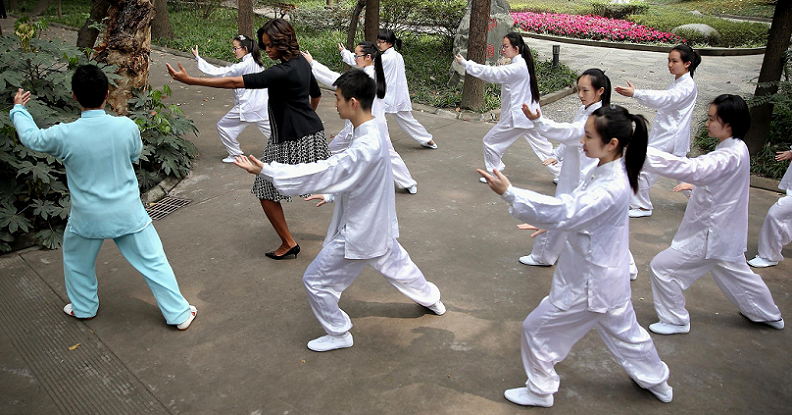
Fitness Techniques from Asia
Asia, the world’s largest and most populous continent, is home to a wide array of indigenous cultures, each with unique traditions and fitness techniques.
Overview of Indigenous Tribes in Asia
Asia is a culturally diverse continent, with hundreds of indigenous cultures. These tribes, often living in close harmony with nature, have developed unique ways to maintain physical fitness, many of which have stood the test of time and continue to be practiced today.
Farming and Hunting Techniques: The Hmong People of Southeast Asia
The Hmong people, indigenous to several countries in Southeast Asia, including Vietnam, Laos, and Thailand, have a traditional lifestyle that naturally promotes physical fitness. The Hmong are traditionally farmers, often cultivating crops on hillside terraces. This labor-intensive work requires strength, endurance, and balance.
Hunting and foraging are also integral to the Hmong way of life. These activities demand agility, precision, and a keen sense of observation, thereby contributing to overall physical fitness and mental alertness [6].
Martial Arts Traditions: Indigenous Cultures of East Asia
In East Asia, notably in cultures such as the Ainu in Japan and the Zhuang in China, fitness has often been cultivated through the practice of traditional martial arts. These indigenous martial arts techniques are not only means of self-defense but also comprehensive systems of physical training.
Traditional martial arts promote strength, flexibility, balance, and coordination. Additionally, they demand mental focus and discipline, illustrating the integration of mind and body in indigenous fitness practices.
For instance, the Ainu people have a traditional form of wrestling known as Ainu Sumo. This sport requires strength, agility, and strategic thinking, offering a well-rounded physical and mental workout.
Fitness Techniques from the Pacific Islands
The Pacific Islands, including Polynesia, Melanesia, and Micronesia, are home to indigenous cultures that have thrived amidst the sea for thousands of years. The fitness techniques in these cultures are often centered around the ocean, with activities such as swimming, canoeing, and traditional dances playing significant roles.
Overview of Indigenous Cultures in the Pacific Islands
The indigenous cultures of the Pacific Islands, from the Maori of New Zealand to the Hawaiians and Samoans, have unique traditions and ways of life deeply connected to the sea. These cultures have developed physical fitness practices that are in harmony with their environment, contributing to their survival, cultural preservation, and overall well-being.
Swimming and Canoeing: Polynesian and Micronesian Cultures
Being island cultures, swimming and canoeing are integral to the lifestyle of many Pacific Islanders. These activities are not only means of transportation and food gathering but also excellent forms of physical exercise.
Swimming provides a full-body workout and enhances cardiovascular health. Traditional canoeing, practiced in cultures such as the Hawaiians and Micronesians, requires strength, balance, and endurance. It also fosters teamwork and coordination when done in groups [7].
Traditional Dance and Its Fitness Aspects: The Maori and Samoans
Traditional dance forms in the Pacific Islands, such as the Maori Haka and the Samoan Siva, are not just expressions of culture and identity but also vigorous physical activities.
The Haka, performed by Maori people of New Zealand, is a powerful dance involving vigorous movements and rhythmic chanting. This dance provides a cardio workout and helps develop strength, particularly in the legs and core.
Similarly, the Samoan Siva is a beautiful and expressive dance that requires grace, flexibility, and rhythm, providing a dynamic workout for the whole body.
In essence, the indigenous cultures of the Pacific Islands offer unique fitness techniques that are deeply intertwined with their way of life and environment. These practices illustrate how fitness can be a natural part of daily life, contributing to physical health, community bonds, and cultural preservation.
References
[1] Revitalizing Optimal Physical Wellness for the Evolution of Indigenous Nationhood
[2] Physical fitness in communities
[3] Being Physically Fit is a Native Tradition
[4] Health and Wellness Impacts of Traditional Physical Activity Experiences on Indigenous Youth
[5] Review of physical activity among Indigenous people
[6] Do physical activity interventions in Indigenous people in Australia and New Zealand improve activity levels and health outcomes?
[7] The Role of Indigenous Games in Culture



